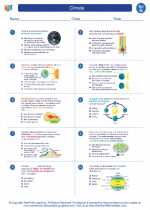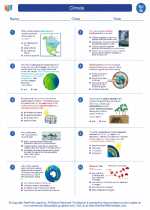Climate -> ecological succession
Ecological Succession
Ecological succession is the process by which the structure of a biological community evolves over time. It is the gradual and predictable change in the species composition of a given area. Ecological succession can occur after a disturbance, such as a fire or a flood, or it can occur in areas that were previously uninhabited.
Types of Ecological Succession
There are two main types of ecological succession: primary succession and secondary succession.
Primary Succession
Primary succession occurs in an area that has never been colonized by living organisms. This can happen on bare rock, sand dunes, or after a volcanic eruption. The process begins with the colonization of pioneer species, such as lichens and mosses, which can survive in harsh conditions. Over time, these pioneer species help to break down the rock and create soil, allowing other plants and eventually animals to move in.
Secondary Succession
Secondary succession occurs in an area that has been disturbed but still retains its soil. This can happen after a forest fire, a hurricane, or human activities such as farming or logging. In secondary succession, the process begins with the regrowth of vegetation from seeds and roots that survived the disturbance. Over time, the community of plants and animals in the area will change and evolve.
Stages of Ecological Succession
There are several stages that typically occur during ecological succession:
- Pioneer Stage: This stage is characterized by the establishment of hardy pioneer species that can tolerate harsh conditions and begin the process of soil formation.
- Intermediate Stage: As soil develops and conditions improve, larger and more complex plants and animals begin to colonize the area.
- Climax Stage: This stage represents a stable and diverse community of plants and animals that is in equilibrium with the environment. It can take many years for a community to reach the climax stage.
Study Guide for Ecological Succession
To understand ecological succession, it is important to consider the following key points:
- Define ecological succession and explain the differences between primary and secondary succession.
- Identify and describe the stages of ecological succession, including the pioneer, intermediate, and climax stages.
- Understand the role of pioneer species in the process of primary succession.
- Explain how disturbances such as fires or human activities can lead to secondary succession.
- Discuss the concept of resilience and how ecosystems can recover from disturbances through succession.
- Consider real-world examples of ecological succession, such as the recovery of vegetation after a volcanic eruption or the regrowth of a forest after a fire.
By mastering the concepts of ecological succession, you will gain a deeper understanding of how ecosystems change and evolve over time.
Remember to observe and appreciate the dynamic nature of the natural world!
.









